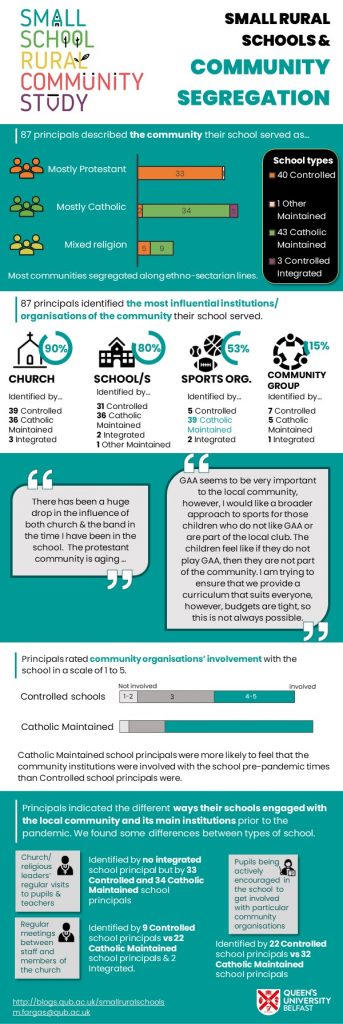This is the third blog post in which we present the results from our recent survey. It’s Good Relations Week #GRW21, and this post focuses on community segregation. In April this year 2021, we invited 201 principals of small rural schools. These were all the schools that had 105 pupils or less enrolled in the school years 2019/20 or 2020/21 in a rural area (as defined by NISRA) in Northern Ireland. In total, 91 took part, although only 86 fully completed the questionnaire. In the previous posts, our infographics focused on challenges and opportunities, and community engagement. The infographic below indicates the level of segregation in rural communities and differences between the two most common types of schools.
Northern Irish society has been historically divided between two main groups: a group with a Catholic community background and Irish identity and a group with a Protestant community background and a British identity. The education system very much reflects this division, with most pupils with a Catholic community background attending Catholic Maintained schools and most pupils with a Protestant community background attending Controlled schools. Only about 7% of pupils attend Integrated schools, attended by children and staff from Catholic and Protestant traditions, as well as those of other faiths, or none. The characteristics of the 201 rural schools invited to take part in the survey reflected this situation, as most of the schools were either Catholic Maintained (n=104) or Controlled (n=89) and only 5 were Controlled Integrated. The rest were either Irish-medium schools (n=2) or other Maintained (n=1). The principals that took part worked in similar proportions of schools belonging to these sectors, as seen in the infographic below. These schools were situated within areas and communities which were mostly segregated too.

